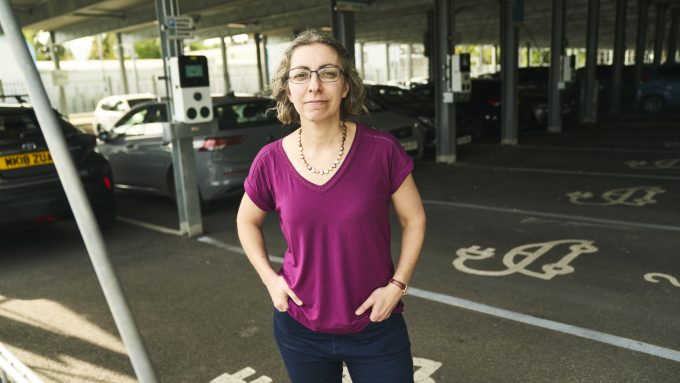
Inaugural Heritage Investment Prospectus launched with Catapult support

“Heritage is the monarchy of placemaking,” said Richard Upton, property developer and a commissioner for Historic England at the launch of its new investment prospectus for disused heritage buildings, inside Connected Places Catapult’s pavilion at the UKREiiF show in Leeds.
“Every city needs its grit; the pearl in the oyster,” he added, “and the juxtaposition of old and new in order to create a sustainable place”.
Richard was on a panel discussing the new Heritage Investment Prospectus, a 78-page guide showcasing 17 sites and buildings in England with significant potential for redevelopment, and where their owners are seeking investment partners or buyers.
They range from an abandoned textile mill in Yorkshire, to an Art Nouveau landmark in Torquay Harbour; a colliery site in Staffordshire, to a former department store in County Durham.
Each entry describes the significance of the historic site, and provides detail of the scale of the opportunity along with heritage designations, ownership information and contact details for each.
Read the Historic England prospectus here.

“This is a brilliant initiative by Historic England,” added Richard. “When I was a boy, I used to go to jumble sales with my mum to rummage around and find things of value.
“There are clear parallels between those jumble sales and the way heritage assets are sold,” he said. “Jumble sales are where priceless Picassos and diamonds in the rough are hidden away, and you can find them. That is what developers are looking for, so it is a genius move to get precious gems into plain sight.”
He also pointed out that England has around 4,500 listed building on an ‘at-risk’ register, so those in the document are a mere introduction to what is out there.
“There is empirical evidence of the value of heritage to society: people are happier and healthier. Heritage restoration is the most sustainable option compared to new build.”Richard Upton, property developer and a commissioner for Historic England
Also on the panel was Emma Squire, Director of Regions at Historic England. “We’re here to tell developers that heritage is an opportunity, and that listed status is not a barrier to development,” she said. “You can still intervene and bring buildings up to specification for current requirements, and have something truly characterful.
“The longer a building stands empty, the harder it can be to restore,” she told the session, adding that restoration of under-used historic buildings can support several Government priorities including housing and growth. “We want responsible custodians to breathe new life into them.”
She added that Historic England is working closely with Homes England to explore the potential regeneration of several brownfield sites in its portfolio.
The session, chaired by Erika Lewis, Chief Executive Officer at Connected Places Catapult, also heard from Councillor Jane Ashworth OBE, of Stoke-on-Trent City Council; and Stephen Anderson, a Director with Buttress Architects.
“Built heritage embodies great traditions and is extremely important for people’s sense of place, wellbeing and hope. It is really important for the people of Stoke-on-Trent that we sort out our built heritage, and that is why we are very keen to be involved to help make our city a better place.”Councillor Jane Ashworth OBE, of Stoke-on-Trent City Council

She added that developers who are interested in working on historic buildings are not always up-to-date as to what is expected of their planning applications. “Sometimes they are rejected as people have not done their homework, so we want to help make sure such failures don’t happen.”
Erika asked Stephen how best to convince investors that heritage-led regeneration makes good business sense. “The main myth is that heritage is the barrier,” he replied, “whereas it is actually access, or ground conditions or cables” that run underneath – as with every development. “We mis-diagnose every time, and it is frustrating when we do.” Instead, developers should identify the challenges with a site and focus on tackling those.
“Heritage assets are a product that is distinct and have economic and social value,” he added. “When we are visionary about it, we can unlock that value.”
Click here to view Historic England’s new Heritage Investment Prospectus.





